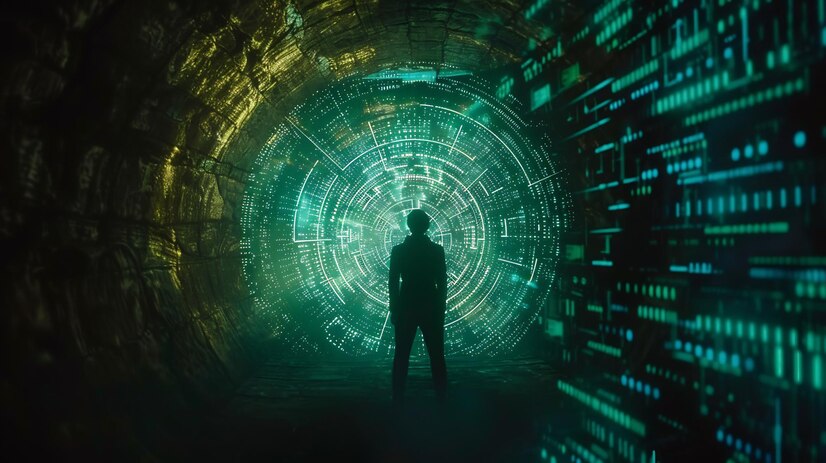Hex codes are the hidden language of color in the digital world. They bring “Hex Code 241f13” our screens to life, transforming bland pixels into vibrant visuals. Among these alphanumeric combinations lies a particular gem: Hex Code 241f13. With its deep, muted tones, this hex code holds a unique charm that many designers and artists adore.
But what makes 241f13 so special? Is it merely another shade in the vast spectrum of colors or does it carry deeper meanings and applications? Join us as we unlock the depths of Hex Code 241f13, explore its history, structure, uses, and symbolism. Whether you’re a seasoned designer or just curious about color theory, you’ll find something intriguing within this exploration. Let’s dive in!
What is Hex Code 241f13?
Hex Code 241f13 is an intriguing color representation in the digital realm. Comprising six characters, it starts with a deep shade of greenish-brown. This code uses a combination of numbers and letters to specify colors precisely.
The first two characters, “24,” indicate the red component. Next comes “1f,” representing green, while “13” depicts blue. Together, they create a rich hue that sits comfortably between earthy tones and muted shades.
Often described as dark olive or forest green, this particular hex code evokes feelings of nature and serenity. It’s commonly found in design projects aiming for sophistication without overwhelming brightness.
Understanding Hex Code 241f13 opens doors to its aesthetic potential across various applications—from graphic design to interior decor—making it a versatile choice for creative minds seeking depth in their color palette.
The History and Development of Hex Codes

Hex codes emerged in the 1980s as a way to represent colors in digital graphics. This system uses a six-digit combination of numbers and letters. It allows for precise color identification across devices.
Initially, hex codes were primarily utilized by web designers and developers. They provided an efficient means to communicate color information within HTML and CSS coding languages. As technology evolved, so did the use of hex codes.
By the ’90s, they became a staple in graphic design software too. Graphic tools integrated this coding system for easy access to vast color palettes.
Today, hex codes are everywhere—from social media platforms to mobile apps—making them integral in the world of digital creativity. Their simplicity encourages artists and developers alike to explore vibrant possibilities without confusion or complexity.
Understanding the Structure of Hex Codes
Hex codes are a fascinating part of digital design, representing colors in a format that’s both compact and versatile. Each hex code consists of six characters, starting with a hashtag (#) followed by three pairs of digits.
The first two characters denote the red component. The next pair indicates green, while the final two represent blue. This RGB (Red, Green, Blue) model allows for millions of color combinations.
For example, in hex code 241f13, “24” signifies a low intensity of red. “1f” corresponds to an even lower amount of green. Lastly, “13” reflects minimal blue content.
Together these components create rich variations within darker shades or more muted tones. Understanding this structure is key for anyone looking to master color theory in design and art applications.
Common Uses for Hex Code 241f13

Hex code 241f13 is a rich, dark shade of green that finds its place in various creative domains. Designers often use it to evoke feelings of sophistication and depth. It pairs well with lighter colors, creating stunning visual contrasts.
In web design, this hex code can enhance users experience by providing an earthy backdrop for text or graphics. Its muted tone adds elegance without overwhelming the viewer.
Interior designers love incorporating 241f13 into color palettes for spaces aiming to feel cozy yet modern. When used on walls or furniture, it brings nature indoors while maintaining a contemporary vibe.
Fashion designers also leverage this hex code to create striking clothing lines that resonate with eco-conscious consumers. The deep hue has become synonymous with sustainability and organic living, appealing to those who value both style and environmental awareness.
Exploring the Meaning and Symbolism Behind 241f13
Hex code 241f13 is a deep, rich shade of dark green that evokes feelings of mystery and serenity. This color embodies the essence of nature, reminding us of lush forests and shadowy canopies.
Symbolically, it represents growth and stability. Dark greens often signify renewal and rejuvenation, making this hue perfect for conveying themes related to life cycles or environmental consciousness. It invites a sense of calmness while encouraging introspection.
In design contexts, 241f13 can also suggest elegance and sophistication. When paired with lighter tones, it creates striking contrasts that draw attention without overwhelming the viewer.
Additionally, its depth allows for versatile interpretations across various cultures; in some traditions, dark greens are associated with prosperity and abundance. The multifaceted nature of this hex code opens up endless possibilities for expression in art and branding strategies alike.
How to Incorporate Hex Code 241f13 into Design and Art
Incorporating Hex Code 241f13 into your design and art can create a striking visual impact. This rich, dark green hue evokes depth and sophistication, making it perfect for various applications.
Use this color as a background to enhance other elements. It provides a strong foundation that allows lighter shades or contrasting colors to pop. Pairing it with golds or creams can bring an elegant touch to any project.
For digital artwork, experiment by blending 241f13 with different textures. Whether it’s a watercolor effect or bold geometric shapes, the contrast will add interest and dimension.
When designing branding materials, consider using this hex code in your logo or packaging. Its earthy tone resonates well with sustainability themes and natural products.
Don’t shy away from mixing 241f13 with patterns. Floral designs or abstract motifs can benefit from its grounding presence while keeping the overall aesthetic vibrant and cohesive.
The Future of Hex Codes and its Impact on Society
As technology evolves, so too does our relationship with colors. Hex codes are no longer just a web developer’s tool; they’re becoming cultural symbols.
In the future, we may see hex codes integrated into everyday life. Imagine smart devices that adapt their displays based on user preferences for specific shades. The emotional response tied to colors could drive product design and marketing strategies.
Moreover, accessibility will play a crucial role. Developers might create tools that better accommodate visually impaired individuals by offering auditory cues linked to specific hex values.
The rise of augmented reality presents another opportunity for hex codes to shine. Users may customize their environments using precise color specifications through AR applications, enhancing personal expression in both virtual and physical spaces.
This shift towards personalized experiences suggests an exciting frontier in how society interacts with color and design choices moving forward.
Conclusion
Hex code 241f13 offers a rich palette for designers and artists alike. Its deep, earthy tones evoke feelings of warmth and stability.
Incorporating this color into various projects can transform the ambiance, giving depth and character to any design. From websites to branding materials, its versatility shines through.
Exploring hex codes like 241f13 reveals how colors influence our emotions and perceptions. This particular shade carries unique symbolism that resonates on different levels.
As technology advances, the world of color continues to evolve. Emerging trends will likely shape how we view and utilize such hex codes in creative endeavors.
The journey with hex code 241f13 is just beginning. Each project brings fresh opportunities to explore its potential further. Embrace the possibilities it presents as you delve deeper into your artistic expressions.
FAQs
What is Hex Code 241f13 used for?
Hex Code 241f13 is primarily used in design projects, branding, and digital art. Its deep hue can evoke emotions or create a specific atmosphere.
How does the structure of hex codes work?
Hex codes are composed of six characters. The first two represent red, the next two green, and the last two blue. For example, in 241f13, “24” indicates red intensity while “1f” represents green and “13” stands for blue.
Can I use Hex Code 241f13 in web design?
Absolutely! You can easily integrate this hex code into your CSS stylesheets to achieve rich colors on websites.
Is there any symbolism associated with the color represented by Hex Code 241f13?
Yes! This dark shade of brownish-green often symbolizes nature and stability. It may also convey feelings of calmness or reliability.
Where else might I see Hex Codes like 241f13 being utilized?
You’ll find similar hex codes across various fields such as fashion design, interior decorating, graphic design, and even marketing campaigns where color psychology plays a crucial role.
Are there tools available to explore more about hex codes?
Definitely! Many online tools allow you to experiment with different colors using their hex values. Websites like Adobe Color Wheel or Canva’s color palette generator are great options for discovering new shades alongside their meanings!
Curious about how certain colors affect mood? Or want tips on blending them harmoniously in designs? Feel free to dive deeper into this vibrant world of hues; it holds endless possibilities waiting just for your creativity!

